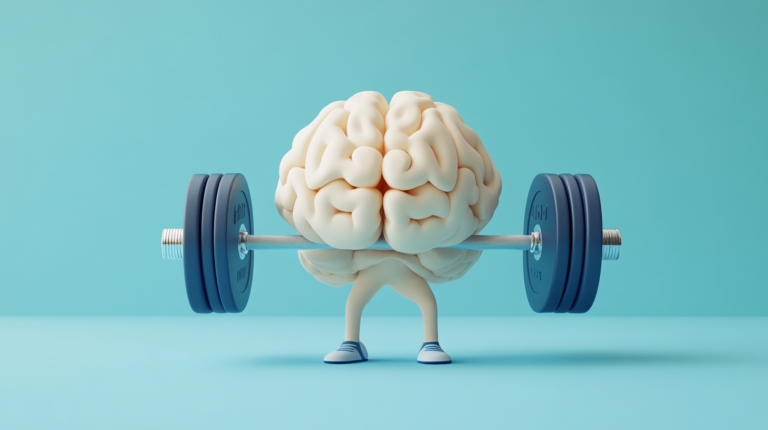The TL;DR for Chronically Rushed Readers (Who Still Want to Change Their Lives)
-
Your brain is basically a lazy couch potato, but we can trick it into productivity
-
Habits are like mental autopilot – great for efficiency, terrible for karaoke nights
-
The habit loop is your brain’s version of “rinse, lather, repeat” (minus the shampoo)
-
Willpower is overrated; environment is your secret weapon for habit change
-
Breaking bad habits is like ghosting a clingy ex – it takes time and persistence
-
Good habits are the compound interest of personal growth (minus the confusing math)
-
Habit stacking is like playing Jenga with your behaviors (but less likely to collapse)
-
Micro-habits are the espresso shots of personal development – small but powerful
Alright, fellow brain-hackers and habit-forming enthusiasts! Buckle up, because we’re about to embark on a wild ride through the twisted corridors of your neural pathways. Today, we’re diving deep into the world of habits – those sneaky little behaviors that can make or break our success faster than you can say “Netflix and chill.”
The Habit Loop: Your Brain’s Favorite Dance Move
Picture this: your brain is like a DJ at a neuroscience rave, and habits are its favorite track. The habit loop is the brain’s way of saying, “Hey, I’ve got this sick beat, let’s play it on repeat!” This loop consists of three main elements:
-
Cue: The trigger that sets everything in motion (like the smell of coffee in the morning)
-
Routine: The actual behavior (stumbling to the coffee machine like a caffeine-deprived zombie)
-
Reward: The payoff (sweet, sweet alertness and the ability to form coherent sentences)
Understanding this loop is crucial because it’s the foundation of all habits, good or bad. It’s like knowing the secret recipe to your grandma’s legendary cookies – once you crack the code, you can recreate the magic (or in this case, rewire your brain).
The Habit Loop in Action: A Day in the Life of a Serial Procrastinator
Let’s take a look at how the habit loop might play out for our friend, Procrastinating Pete:
-
Cue: Pete sees a notification for an important work email
-
Routine: Instead of addressing it, Pete opens social media and starts scrolling
-
Reward: Pete experiences temporary relief from work stress and gets a dopamine hit from likes and comments
Now, if Pete wants to break this habit, he needs to identify the cue (work stress) and find a new routine that provides a similar reward (stress relief) without the negative consequences. Maybe he could try a quick meditation app instead of reaching for his phone. Baby steps, Pete. Baby steps.
Why Habits Are Your Brain’s BFF (Best Frugal Friend)
Here’s the deal: your brain is essentially a lazy bum. It’s constantly looking for ways to conserve energy, like a penny-pinching accountant trying to save on the electric bill. Habits are its way of putting things on autopilot, freeing up mental resources for more important tasks (like remembering obscure movie quotes or perfecting your air guitar solo).
This efficiency is great when it comes to positive habits like brushing your teeth or exercising. But it’s not so fantastic when your brain decides that scrolling through social media for hours is a perfectly acceptable way to spend an evening.
The Good, The Bad, and The Ugly of Habit Efficiency
The Good:
-
Automatically flossing your teeth every night
-
Instinctively reaching for a water bottle instead of soda
-
Reflexively putting on your seatbelt as soon as you get in the car
The Bad:
-
Mindlessly snacking while watching TV
-
Checking your phone every 5 minutes (even at funerals)
-
Cracking your knuckles so much you sound like a one-person percussion band
The Ugly:
-
Biting your nails until they resemble tiny, flesh-colored stubs
-
Procrastinating so hard you could win Olympic gold in the “Last-Minute Panic” event
-
Stress-eating an entire party-sized bag of chips and wondering why you feel like a human bean bag
The Power of Habit: Tiny Changes, Big Results
Remember that time you decided to become a morning person, only to hit the snooze button 17 times and arrive at work looking like you’d been dragged through a hedge backward? Yeah, changing habits isn’t easy. But here’s the good news: small, consistent changes can lead to massive results over time.
Think of habits as the compound interest of personal development. Just like how saving a few bucks a day can turn you into a millionaire (in approximately 27,397 years), tiny habit changes can transform your life. It’s like the butterfly effect, but instead of a butterfly flapping its wings and causing a hurricane, it’s you flossing your teeth and somehow becoming CEO of a Fortune 500 company. (Okay, maybe not quite, but you get the idea.)
The Domino Effect: How One Small Habit Can Change Everything
Let’s say you decide to start a simple habit of making your bed every morning. Seems trivial, right? But consider this chain reaction:
-
You make your bed → Your room looks tidier
-
Tidy room → You feel more organized and in control
-
Feeling of control → You’re motivated to tackle other small tasks
-
Accomplishing small tasks → Increased confidence and productivity
-
Increased productivity → Better performance at work
-
Better work performance → Potential promotion or raise
-
Promotion → Improved financial situation and life satisfaction
Suddenly, that simple act of making your bed has snowballed into a life-changing series of events. It’s like playing Domino Rally with your life choices, except less frustrating and with fewer tiny plastic pieces to step on.
Breaking Bad (Habits): No Meth Labs Required
Breaking bad habits is like trying to quit a clingy ex – it’s tough, it takes time, and you might find yourself falling back into old patterns when you’re feeling vulnerable (or have had one too many tequila shots). But fear not! Here are some strategies to kick those pesky habits to the curb:
-
Identify the cue: What triggers your bad habit? Is it stress? Boredom? The sudden realization that you’re out of cheese puffs?
-
Disrupt the routine: Change your environment or create obstacles. For example, if you’re trying to quit smoking, throw away all your lighters and replace them with tiny violins to play sad songs every time you crave a cigarette.
-
Find a new reward: Replace the old payoff with something healthier. Instead of stress-eating an entire pint of ice cream, try stress-knitting a sweater for your cat (bonus: hilarious Instagram content).
-
Use the “If-Then” technique: Plan your response to triggers. “If I feel the urge to procrastinate, then I’ll do five jumping jacks and yell ‘I am a productivity ninja!'” (Warning: May result in confused coworkers.)
-
Practice self-compassion: Be kind to yourself when you slip up. Remember, you’re human, not a habit-changing robot (although that would be pretty cool).
The Do’s and Don’ts of Habit Breaking
Do’s:
-
Do replace your bad habit with a positive one
-
Do enlist the support of friends and family
-
Do track your progress and celebrate small victories
-
Do anticipate and plan for obstacles
-
Do be patient with yourself – Rome wasn’t unbuilt in a day
Don’ts:
-
Don’t try to break multiple habits at once (unless you enjoy feeling like a failure)
-
Don’t rely solely on willpower (it’s about as reliable as a chocolate teapot)
-
Don’t beat yourself up over slip-ups (save that energy for your new gym habit)
-
Don’t expect overnight success (unless you’re literally trying to form a habit of sleeping)
-
Don’t forget to address the underlying causes of your bad habits (stress, boredom, existential dread, etc.)
Building Good Habits: Your Personal Success Assembly Line
Now that we’ve tackled the bad habits, let’s focus on building some good ones. Think of this as creating your own personal success assembly line, except instead of widgets, you’re producing awesomeness.
-
Start ridiculously small: Want to run a marathon? Start by putting on your running shoes every day. That’s it. Don’t even run. Just put on the shoes. Your brain will be so confused it might actually make you go for a jog out of sheer curiosity.
-
Stack your habits: Attach new habits to existing ones. For example, “After I brush my teeth, I will do one push-up.” Eventually, you’ll either have great oral hygiene and be super buff, or you’ll stop brushing your teeth altogether. (Please don’t stop brushing your teeth.)
-
Make it obvious: Want to read more? Leave books everywhere – on your nightstand, in the bathroom, in the refrigerator. (Okay, maybe not that last one, unless you’re into really cool books.)
-
Celebrate small wins: Did you drink a glass of water today? Congratulations! You’re basically a hydration superhero. Do a little dance, give yourself a high five, or treat yourself to a sticker. (Yes, adults can have sticker charts too. Don’t let anyone tell you otherwise.)
-
Use habit tracking: Keep a record of your progress. It’s like having a Fitbit for your willpower, minus the annoying wrist strap.
The Art of Habit Stacking: Building a Tower of Awesome
Habit stacking is like playing Jenga with your behaviors, but instead of eventually collapsing in a heap, you’re building an indestructible tower of awesomeness. Here’s how it works:
-
Start with a solid base habit (something you already do consistently)
-
Add a new, small habit on top of it
-
Once that becomes automatic, add another
-
Rinse and repeat until you’re basically a productivity superhero
Example habit stack:
-
After I pour my morning coffee (base habit), I will…
-
Do 10 squats
-
Write down three things I’m grateful for
-
Read one page of a book
-
Send a positive message to a friend or family member
-
Before you know it, you’ll have a morning routine that makes you feel like you’ve conquered the world before most people have even hit the snooze button.
The Willpower Myth: Why Environment Trumps Motivation
Here’s a hard truth: willpower is about as reliable as a chocolate teapot in a sauna. It’s a finite resource that gets depleted faster than your phone battery when you’re trying to Instagram your entire vacation.
Instead of relying on willpower alone, focus on creating an environment that supports your goals. Want to eat healthier? Don’t buy junk food. Trying to wake up earlier? Put your alarm clock across the room (and maybe invest in a catapult bed for good measure).
Remember, it’s much easier to resist temptation when it’s not staring you in the face like a sad puppy begging for treats.
Environmental Hacks for Habit Success
-
The 20-Second Rule: Make good habits 20 seconds easier to start, and bad habits 20 seconds harder. Want to play more guitar? Leave it out on a stand. Want to watch less TV? Unplug it and put the remote in a drawer.
-
Visual Cues: Use Post-it notes, phone wallpapers, or even temporary tattoos (for the truly committed) to remind you of your goals and habits.
-
The Premack Principle: Pair something you need to do with something you want to do. For example, only watch your favorite show while folding laundry. Suddenly, you’ll be the laundry ninja of your household.
-
Social Surroundings: Surround yourself with people who have the habits you want to develop. Want to be more active? Join a sports team or find a workout buddy. Want to procrastinate less? Maybe stop hanging out with that friend who’s always “living for the weekend.”
-
Choice Architecture: Rearrange your environment to make good choices easier. Put healthy snacks at eye level in your fridge, or set up a small home gym in front of your TV.
The 21-Day Myth and Other Habit Formation Fairytales
You’ve probably heard that it takes 21 days to form a habit. Well, I hate to break it to you, but that’s about as scientifically accurate as the idea that cheese gives you nightmares. (Although, to be fair, eating an entire wheel of brie before bed probably isn’t great for your sleep quality.)
In reality, habit formation can take anywhere from 18 to 254 days, depending on the person and the complexity of the habit. So don’t get discouraged if you’re not a habit-forming prodigy after three weeks. Rome wasn’t built in a day, and your new gym habit won’t be either (although hopefully it won’t take as long as the Roman Empire to establish).
Habit Formation: Expectations vs. Reality
Expectation: “I’ll start going to the gym, and in 21 days I’ll be a fitness addict with abs of steel!”
Reality: Day 1-7: Enthusiasm! Day 8-14: Soreness and regret. Day 15-21: Negotiating with yourself about whether “thinking about going to the gym” counts as exercise.
Expectation: “I’ll start meditating for an hour every day, and soon I’ll achieve enlightenment!”
Reality: Spend most of your “meditation” time wondering if you remembered to defrost the chicken for dinner, and whether enlightenment includes never having to do laundry again.
Expectation: “I’ll quit social media cold turkey and become a productivity machine!”
Reality: Replace social media scrolling with obsessively checking your email, the weather, and that weird mole on your elbow that’s probably nothing but what if it’s not?
The takeaway? Be patient with yourself, adjust your expectations, and remember that sustainable change takes time. It’s a marathon, not a sprint (unless, of course, you’re trying to form a sprinting habit, in which case, carry on).
Micro-Habits: The Espresso Shots of Personal Development
If the idea of overhauling your entire life seems as daunting as trying to teach a cat to fetch, fear not! Enter the world of micro-habits: tiny, almost laughably small behaviors that can lead to big changes over time.
Micro-habits are like the espresso shots of personal development – small, potent, and capable of giving you a surprising boost. Here are some examples to get you started:
-
The Two-Minute Rule: If a task takes less than two minutes, do it immediately. This works for things like responding to important emails, making your bed, or finally throwing away that weird piece of lettuce that’s been lurking in your fridge for weeks.
-
The One-Push-Up Challenge: Commit to doing just one push-up a day. It’s so easy, you’ll feel silly not doing it. And once you’re down there, you might just surprise yourself and do a few more.
-
The Gratitude Gulp: Every time you take a sip of water, think of one thing you’re grateful for. You’ll either become more hydrated, more appreciative, or both. Win-win!
-
The Posture Check: Every time you walk through a doorway, check and correct your posture. You’ll either improve your posture or develop a weird reputation as “that person who always looks startled by doors.”
-
The Phone Flip: When you’re not using your phone, place it face-down. This tiny action can significantly reduce the temptation to check it constantly, giving you more time to stare blankly into space like a proper adult.
Remember, the key to micro-habits is consistency, not intensity. It’s better to do one push-up every day than to do 100 push-ups once and then use your exercise mat as an impromptu picnic blanket for the rest of the year.
Conclusion: Your Brain, Your Rules
Congratulations! You’ve now graduated from Habit Hacking 101 with flying colors (and possibly a slight headache from all the brain metaphors). Remember, changing habits is a journey, not a destination. It’s like trying to teach an old dog new tricks, except you’re both the dog and the trainer, and the tricks involve rewiring your neural pathways instead of fetching a stick.
So go forth, my fellow brain-hackers, and start building those habits that will lead you to success. Whether you’re aiming to become a productivity ninja, a fitness guru, or just someone who remembers to water their plants regularly, the power is in your hands (and your prefrontal cortex).
And hey, if all else fails, just remember: at least you’re not a sea cucumber. They eat with the same hole they poop from. Now that’s a habit I bet they wish they could change.
But seriously, folks, habit formation is like learning to ride a bike. At first, it’s wobbly, uncomfortable, and you might fall a few times. But keep at it, and before you know it, you’ll be cruising down the streets of life with the wind in your hair and your bad habits in the rearview mirror.
Remember, every great achievement in history started with a single habit. Edison didn’t invent the light bulb in a day; he just had a habit of not giving up (and probably a habit of replacing burnt-out filaments). Michelangelo didn’t paint the Sistine Chapel in one go; he just had a habit of showing up and painting a little bit each day (and a habit of lying on his back for hours, which we don’t recommend unless you’re also creating a masterpiece).
So, as you embark on your habit-forming journey, keep these final thoughts in mind:
-
Be patient with yourself. Rome wasn’t built in a day, and your habit of flossing won’t be either.
-
Celebrate the small wins. Did you drink water instead of soda today? You’re practically a hydration superhero!
-
Learn from your slip-ups. Every time you fall back into an old habit, it’s just your brain giving you a pop quiz on what you’ve learned.
-
Keep your sense of humor. If you can laugh at yourself, you’ve already formed one of the best habits there is.
Now go out there and start hacking your brain! Just remember, with great power comes great responsibility. Use your newfound habit-forming superpowers wisely. And if you happen to form a habit of reading awesome blog posts about habit formation, well, who are we to judge?
Here’s to new habits, new neural pathways, and a future where your biggest problem is deciding which amazing habit to form next. May your cues be clear, your routines be rewarding, and your willpower be stronger than a caffeinated bodybuilder. Happy habit hacking!
Continue Reading: “The Procrastinator’s Guide to Time Management: How to Get Stuff Done When You’d Rather Watch Paint Dry” “Mindfulness for the Easily Distracted: Meditation Techniques for People Who Can’t Sit Still” “Emotional Intelligence: How to Navigate Your Feelings Without Becoming a Human Mood Ring”









